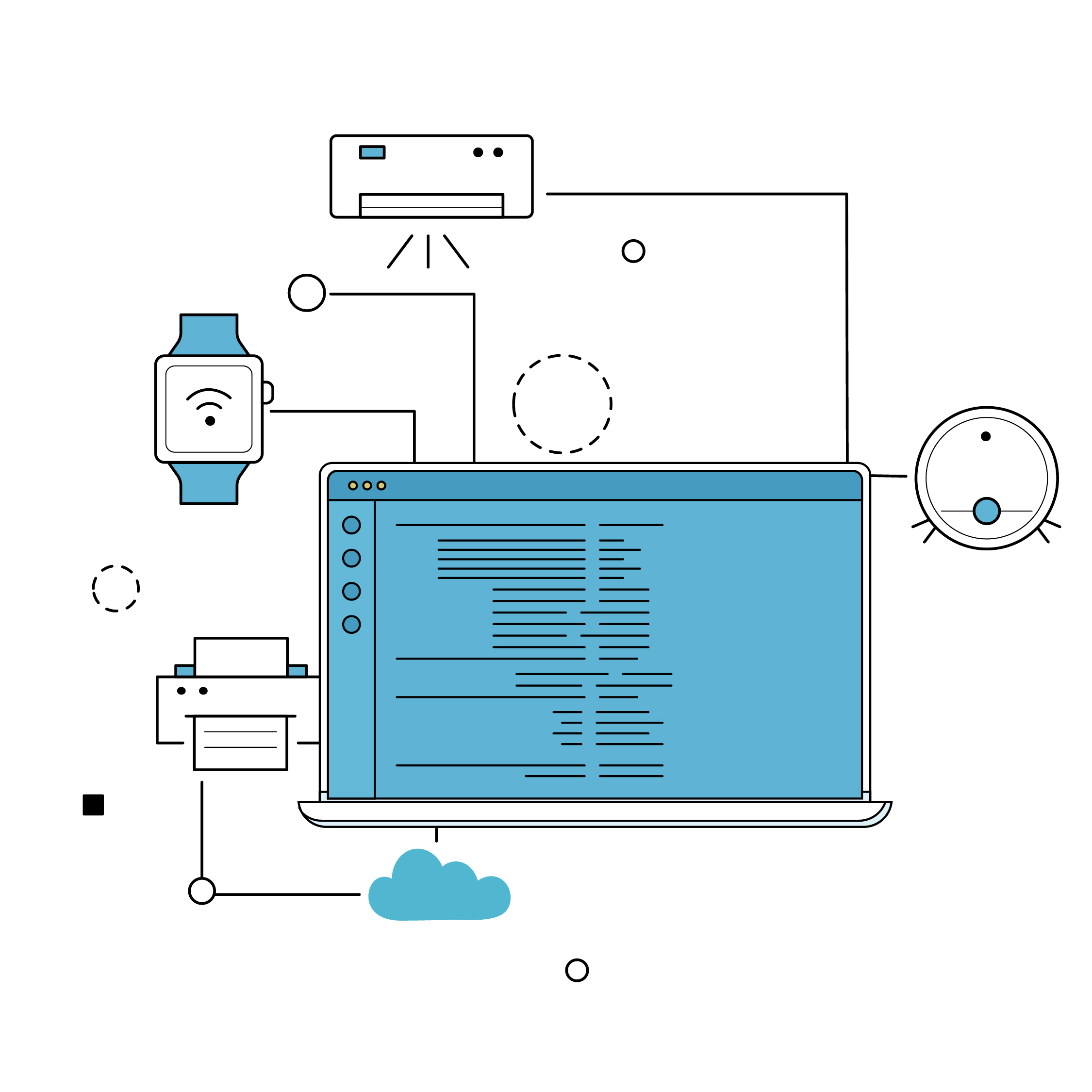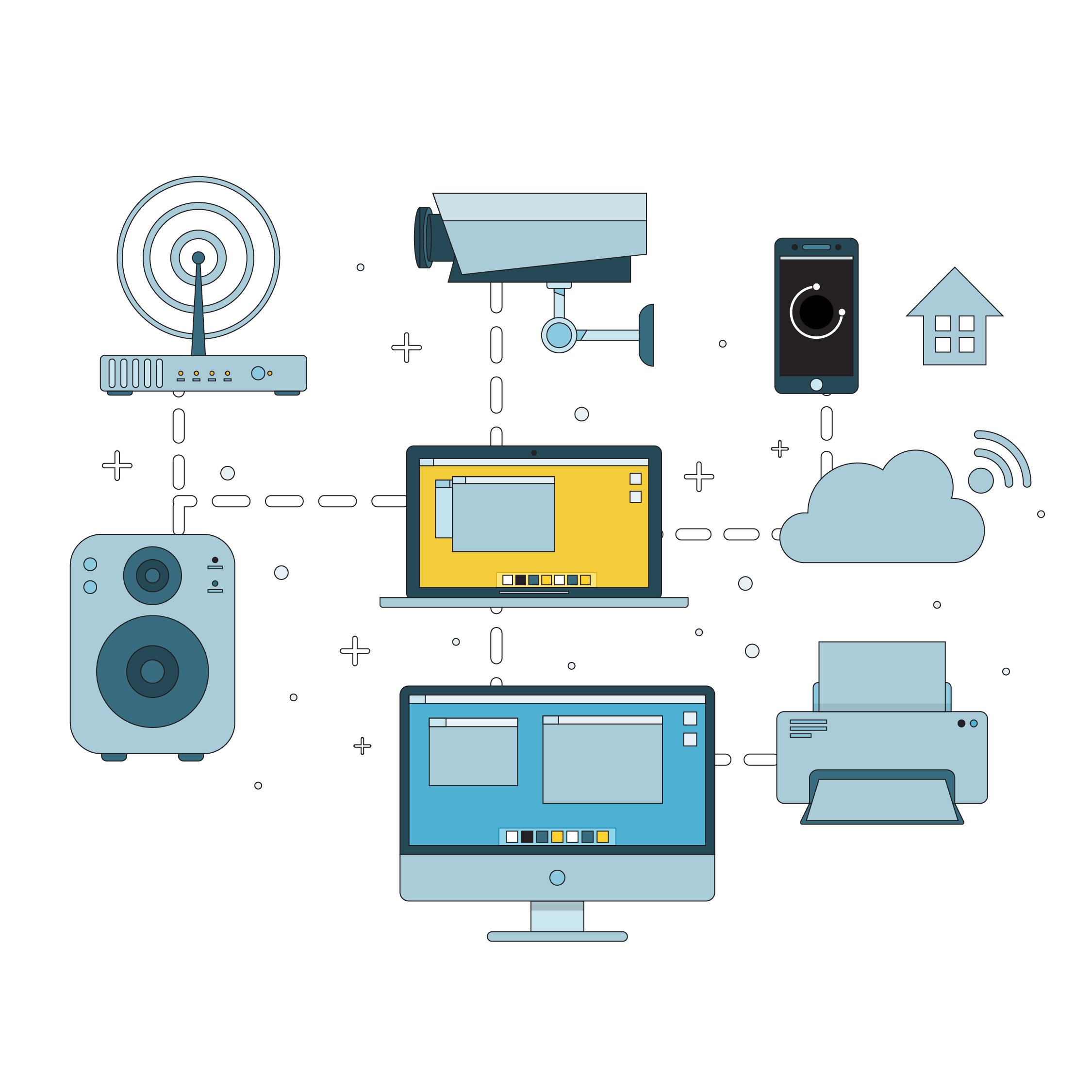Coding Cosmos: Golang’s Stellar Impact on Connected Systems
The selection of programming language is essential in the quickly changing field of the Internet of Things (IoT), where connected devices act as the establishment for a world that is more brilliant and more connected. In this field, Golang, also known as Go, is a brilliant illustration that advances versatility and effectiveness. Golang was made by Google developers explicitly to address the challenges presented by IoT ecosystems. The particular characteristics of Golang become clear as we dig into the subtleties of making adaptable and powerful networked frameworks. Golang adds another degree of intricacy, parallelism, and execution to IoT development. This blog venture explores the advantages and uses of the Internet of Things while exploring its shifting landscape.
The particular characteristics of Golang become clear as we dig into the subtleties of making adaptable and powerful networked frameworks. Golang adds another degree of intricacy, parallelism, and execution to IoT development. This blog venture explores the advantages and uses of the Internet of Things while exploring its shifting landscape.
Discover how this language, made with the engineering meticulousness of Google, makes it more scalable to make versatile and reliable systems that support the Internet of Things. Golang for IoT is ready to change our thought process about and build connected systems, from speeding up the development process to taking care of concurrent activities effortlessly. Come explore how Golang powers Internet of Things applications, where versatility and effectiveness join to shape the underpinning of a faultlessly connected future. Get familiar with the code that drives the networked systems and ushers in a day when Golang is equated with the Internet of Things architecture.
Weaving the Inherent Whys of Golang in IoT
Choosing a programming language resembles picking the groundwork of an organized realm in the immense universe of Internet of Things (IoT) improvement. Golang stands up as a strong option in this situation, coordinating its novel advantages into IoT designs. The blend of IoT with Golang is something beyond an innovation match; a commonly helpful union advances viability, expandability, and dependability. The nonconcurrent necessities of the Internet of Things are appropriate for Golang’s concurrency worldview. Its goroutines, which are lightweight threads constrained by the Go runtime, make it simpler to do concurrent tasks effortlessly. Inside the Internet of Things (IoT), where different devices convey and work simultaneously, Golang’s simultaneousness paradigm ensures viable assignment taking care of without forfeiting performance. IoT devices regularly have restricted resources available to them. Proficiency is given first concern in Golang’s design, which includes a runtime with low asset utilization and a simple language.  Because of this, Golang is the most ideal choice for making applications that should work on IoT devices with restricted assets since it keeps the programming language from turning into a performance boundary. Scalability turns into an urgent component as IoT ecosystems develop. Golang’s natural scalability makes it ideal for many applications, from limited-scope IoT establishments to those including a few devices. It’s perfect, simple syntax and limit concerning taking care of different activities at once enable developers to scale apps easily.
Because of this, Golang is the most ideal choice for making applications that should work on IoT devices with restricted assets since it keeps the programming language from turning into a performance boundary. Scalability turns into an urgent component as IoT ecosystems develop. Golang’s natural scalability makes it ideal for many applications, from limited-scope IoT establishments to those including a few devices. It’s perfect, simple syntax and limit concerning taking care of different activities at once enable developers to scale apps easily.
Cross-compilation ability in Golang makes it simple to make doubles for several frameworks. In the heterogeneous IoT climate, where gadgets might contrast extraordinarily as far as design and working frameworks, Golang’s cross-platform similarity guarantees a predictable and streamlined development process. The standard library for Golang is a genuine treasure trove of highlights that accelerate Internet of Things development. Golang’s standard library improves on the development cycle by dealing with activities related to networking and encoding and decoding data formats that are much of the time utilized in Internet of Things connections. This limits the requirement for significant third-party dependencies. Golang fills in as a reference point, coordinating developers toward the formation of dependable and versatile connected frameworks in the age of the Internet of Things when proficiency and versatility are basic. The Golang IoT platform empowers developers to productively and carefully cross the intricacy of this networked environment.
Linguistic Showdown: Unveiling the IoT Winner – Golang’s Gopher?
Inside the powerful field of Internet of Things development, the opposition between JavaScript and Golang resembles an energetic dance of algorithms, with both contending to be the main director of the networked ensemble of gadgets. Here, the event-driven rhythm of JavaScript contends with the melodic delicacy of the Golang maestro’s synchronous beats. In cases including a great deal of assets, Golang, which is praised for having a lightweight concurrency design, becomes the dominant focal point. Its compelling usage of framework assets and solid treatment of a few concurrent cycles empower it to be a capable guide for flawlessly organizing an assortment of Internet of Things devices. JavaScript is a carefully prepared entertainer in the browser-centric space that moves flawlessly into the edge device space. In light of its versatility, Golang for IoT is the most ideal choice for applications where the client-side and server-side communicate intently.
The vast community of JavaScript makes a cooperative dance across libraries, frameworks, and modules. IoT developers benefit significantly from this cooperative soul, which gives a great many tools and solutions. Then again, Golang’s agile community stresses effortlessness and performance in IoT organization, orchestrating a designated ensemble. With regards to fast prototyping, JavaScript drives the way as a result of its deciphered nature, which empowers developers to rehash ideas rapidly. JavaScript frameworks’ expressiveness makes for a liquid innovative process that is ideally suited for iterating and sharpening IoT prototypes. The rich statically-typed Golang presents a unique dance. The clearness and brevity of the syntax act as the movement notes for developers hoping to move in a trained way inside the IoT space. Be that as it may, JavaScript’s broad use ensures a more happy with moving floor, especially for those receptive to the web development musicality. The nuances of the choreography decide if one favors the fast pirouettes of JavaScript or the agile developments of IoT with Golang in the extraordinary artful dance of IoT development. Each language adds its exceptional moves to the complicated dance of interconnected frameworks, shaping the IoT ensemble with various yet complementary movements.
Golang’s Kaleidoscope: Shaping Diverse Futures Across Sectors
Golang, a programming language that is normally alluded to as Go, is a virtuoso that shows off its abilities in various enterprises while winding around an embroidery of speed, dependability, and proficiency. Inside the Internet of Things (IoT) space, Golang is a director leading an orchestra of smooth and expandable applications. Golang is an ideal possibility for making a dependable IoT framework as a result of its concurrent design and lightweight. Due to its viability in dealing with different activities on the double, it works with data handling and communication among many connected devices, giving areas of strength for the Internet of Things. Golang’s dynamic exhibition is being seen by the cloud sector as it frames the establishment for making versatile cloud services. The effectiveness and agility needed in cloud-centric applications are worked with by its concurrent programming capabilities, small memory footprint,  and quick compilation time. Golang’s regular fitness for networking puts it at the very front of networking solution development. Golang is a conspicuous language for making networking layers in the Internet of Things frameworks due to its viability in dealing with a few connections immediately and its broad standard library, which ensures smooth communication between devices.
and quick compilation time. Golang’s regular fitness for networking puts it at the very front of networking solution development. Golang is a conspicuous language for making networking layers in the Internet of Things frameworks due to its viability in dealing with a few connections immediately and its broad standard library, which ensures smooth communication between devices.
Golang finds its balance in the age of edge registering, as data processing is drawn nearer to the source. In light of its fast assemblage and execution speed, it’s the ideal decision for creating edge applications, amplifying resource use, and ensuring real-time responsiveness in Internet of Things establishments. Since Golang is cross-platform, it is a gifted craftsman at making applications that function admirably in various conditions. In the Internet of Things situations, this flexibility becomes basic as interoperability and versatility are fundamental for a great many devices and frameworks. Golang’s microservices architecture is improved by its reconciliation with containerization solutions like Docker and Kubernetes. The effortlessness, speed, and productivity of the language work with the formation of microservices, which thus elevates a way to deal with Internet of Things applications that are measured and adaptable. Golang is an adaptable virtuoso who ascends to the big stage in a few sectors and assumes a vital part in the formation of Internet of Things applications. In light of its flexibility, simultaneousness model, and execution, the Golang IoT platform very well may be viewed as a director organizing the connection symphony in the ever-changing modern industry.
Purveyors of Golang Prowess: Pattem Digital’s Signature Touch
At the apex of excellence, our Golang mobile app development company creates solutions that are unequaled in quality and ability. With a gifted team that knows how to write concurrently in Golang, our applications work at a speed and productivity that is unmatched. We make wonders of cross-platform UI design, ensuring smooth communications across a few ecosystems. We are reforming networking standards by becoming forerunners in cloud services and IoT integration. Our Golang engineers’ ensemble blends microservices with edge computing, introducing another era of mobile app architecture. Pick us for an inventive orchestra where our experience and Golang’s ability join to make applications that are beyond expectations.


